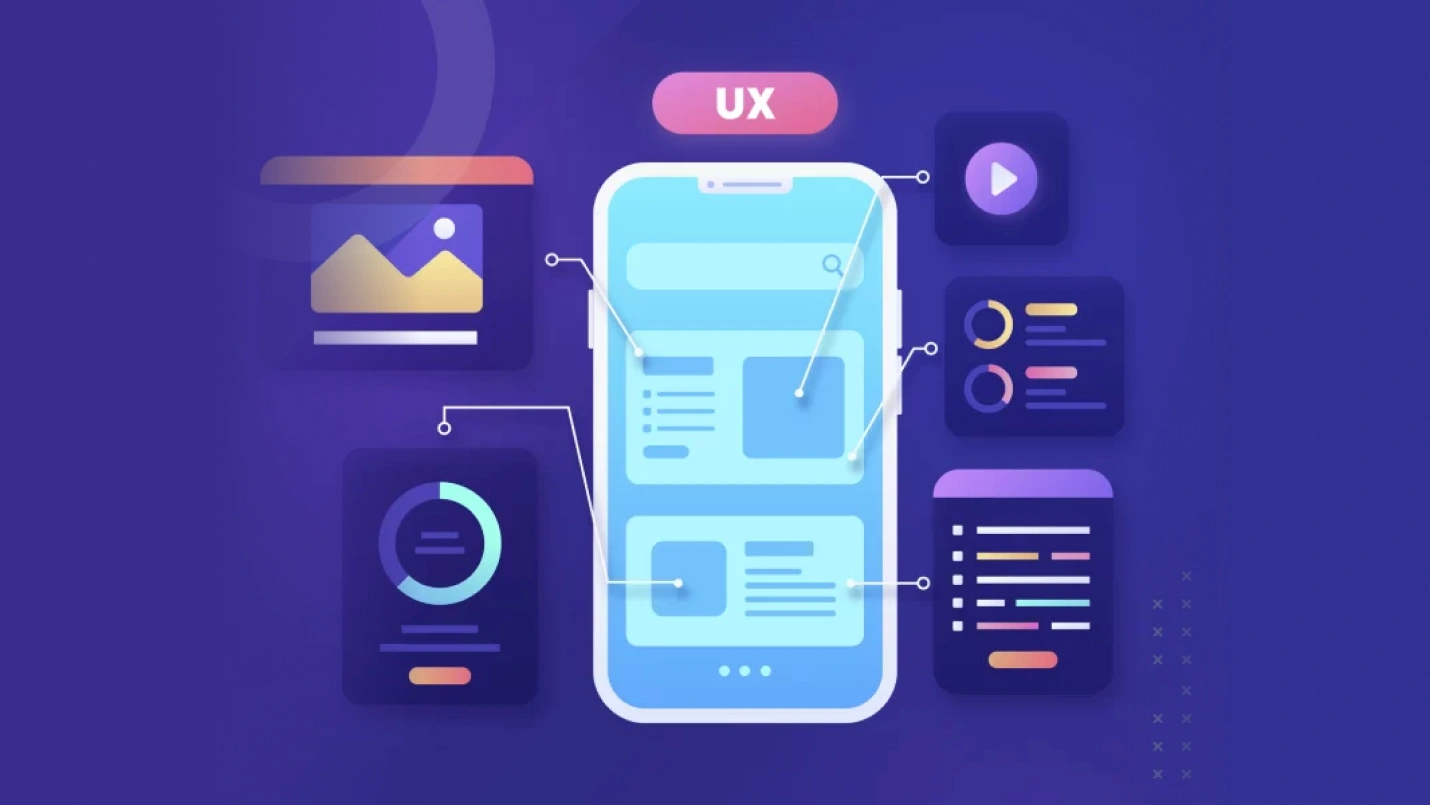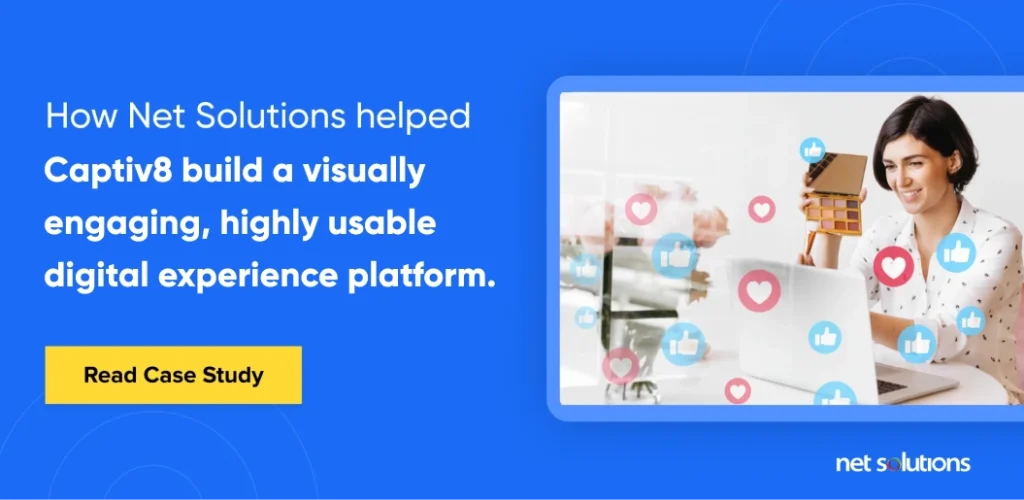Summary: To succeed in today’s dynamic digital era, businesses must plan the user experience around customers. Personalization will help build trust, authority, fanbase, leads, and subsequent conversions. This write-up will guide you on personalization in UX, its types, importance, use cases, and best practices.
Everybody is talking about personalization these days. If done right, it can differentiate you from laggards and establish you as a business leader. Personalization builds empathy, trust, and loyalty that help establish a high-impact business.
Personalization works because it humanizes a brand. The objective of personalization is to let customers know that:
- The business knows and understands its customers
- The customer is the business’ priority
The simplest example of personalization is email. According to eMarketer, emails with personalized subject lines witness a 26% rise in open rates.
Personalized subject-line example: “Juan, your wishlist is waiting for you.”
Another exemplary example is the way Netflix embraces personalization. The “Top Picks for [Name]” and “Because you Watched [Video Title]” are powerful ways to personalize videos for each user.
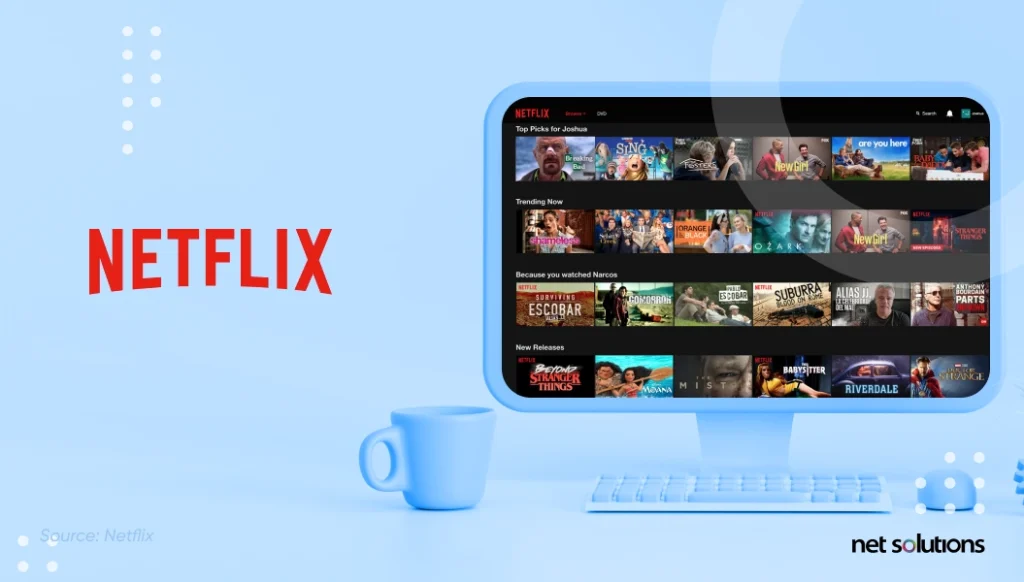
Other brands like Nike, Spotify, and Starbucks are also nailing personalization and have built a substantial fan base.
To begin, a brand needs to emphasize data collection and analytics to understand its target audience’s needs, preferences, and expectations.
This write-up will provide a detailed understanding of personalization.

We respect your privacy. Your information is safe.
What is Personalization?
Personalization is a process that enables businesses to tailor customer journeys and experiences to the needs and preferences of each customer. A brand may have both an app and a website. Customer experience needs to be emphasized. The customer’s needs must be known and accounted for regardless of how they interact with the brand.
“Personalization is not a trend; it’s a marketing tsunami.”— Avi Dan
Personalization places the customer at the center while the brand rotates around it. As the business continuously revolves around the customer, it scales upon personalization. This practice helps 93% of B2B leaders increase their company’s revenue.
Personalization vs. Customization
Customization and personalization both aim to tailor content to the likes of the customer who is using the product.
The difference between the two lies in the approach followed to tailor the content:
Personalization is tailored from the product provider’s end. Business minds implement data analytics, make data-driven assumptions, and display relevant customer results automatically. The better the personalization, the better the customer experience.
In personalization, the brand sits in the driving seat and makes calculated decisions in favor of the user.
Personalization Example: When a user is greeted by their first name on Netflix and is suggested shows and movies based on their watch history.
On the other hand, customization is usually done by the customers themselves. Customers choose among options to tailor their user experience to suit their needs.
In customization, users sit in the driving seat and make decisions for themselves.
Customization Example: Netflix allows users to change their profile settings, such as profile pictures, profile settings for different users, and even maturity settings to restrict certain content.
Here’s another simple example that helps differentiate between customization and personalization:
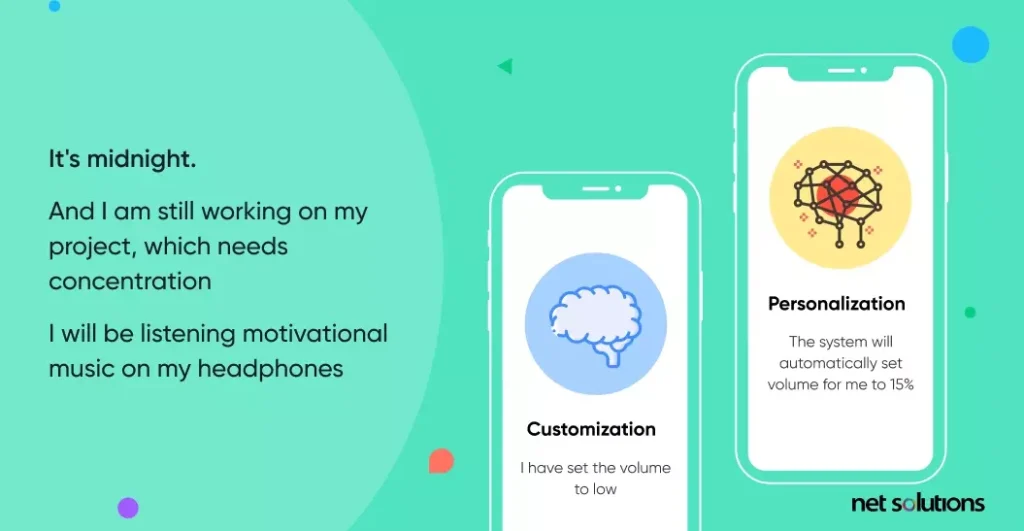
Types of Personalization
There are mainly three types of personalization, which include:
1. Explicit Personalization
This is the type of personalization based on the information received from users.
This information is one trustworthy source of information and is not built on assumptions.
Examples:
- Surveys
- Form fills
- Browsing history
- Purchase history
2. Implicit Personalization
This type of personalization is based on the user’s behavioral patterns. The information is derived from analyzing product usage patterns, which further helps with predictive analysis.
Examples:- Recommended products based on previous purchases
3. Contextual Personalization
This is the type of personalization based on pre-known data about the customer.
This pre-known data helps in displaying relevant results, which, in turn, increases the chances of users taking the desired action.
Examples:
- Location data
- Device data
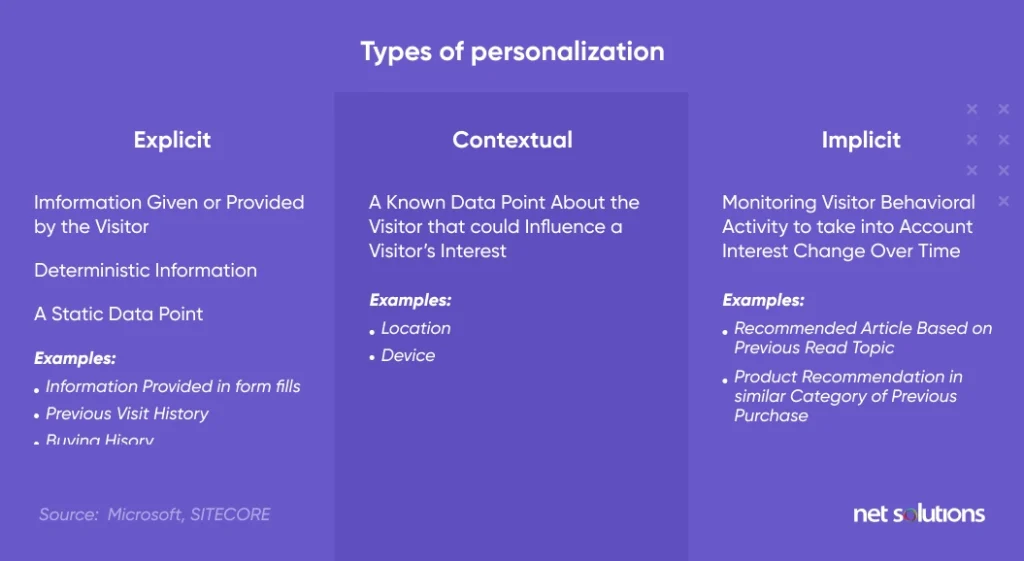
Importance of Personalization
Research by Forrester reveals that personalization is “crucial for marketers seeking to enhance customer centricity and engagement.” Thus, delivering user experience personalization has become a key approach for CMOs to attract and convert potential customers.
When a brand personalizes its website or app, they aim to provide the users with what they are looking for without asking for it. This reduces the effort and time the customer spends finding what they want, thus enhancing their customer experience and satisfaction with the technology.
Personalization positively contributes to the “aha” moments in the customer’s experiences.
When done right, personalization is a lucrative strategy for a business.
- 75% of business leaders say personalization is integral for digital experiences
- 52% of consumers agree that their satisfaction improves as personalized digital experiences with brands become more personalized.
- 60% of consumers say they will become repeat buyers after a personalized shopping experience
Personalization Use Cases
When a business integrates personalization with existing technological abilities, its revenues double.
Here are some use cases to prove how using personalization in digital product design is helping brands make a big difference:
1. Grammarly Sending Weekly Usage Reports
Grammarly is a popular mobile app that helps users improve their writing skills by catching their grammar mistakes. However, the robust algorithm is one of many things that make it unique. Grammarly also has weekly reports features that let users see how their writing has improved.
The weekly usage reports feature includes the number of words the user wrote that week, the number of mistakes they made, and which mistakes they made frequently. These reports also highlight the potential areas of improvement. This way, customers can improve their products more.
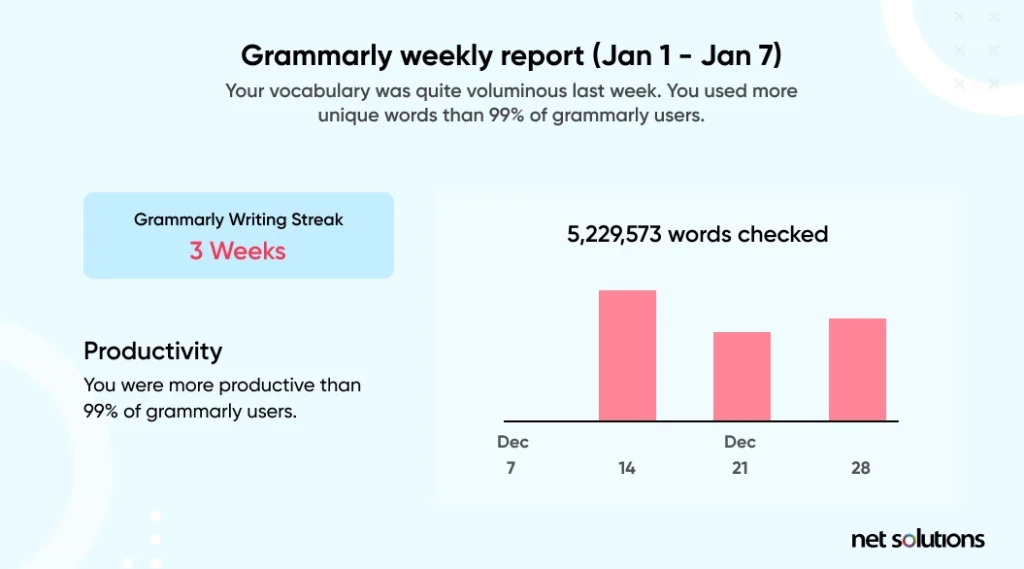
2. Netflix and Hulu Involving Customers in Show Feedback
Netflix and Hulu are popular for recommendations of new shows and movies. To provide the most accurate recommendations of new shows and movies, create targeted recommendations that the user can like, dislike, or love. Then, these streaming apps use this data to provide a curated feed of personalized movie and TV show recommendations for each user.
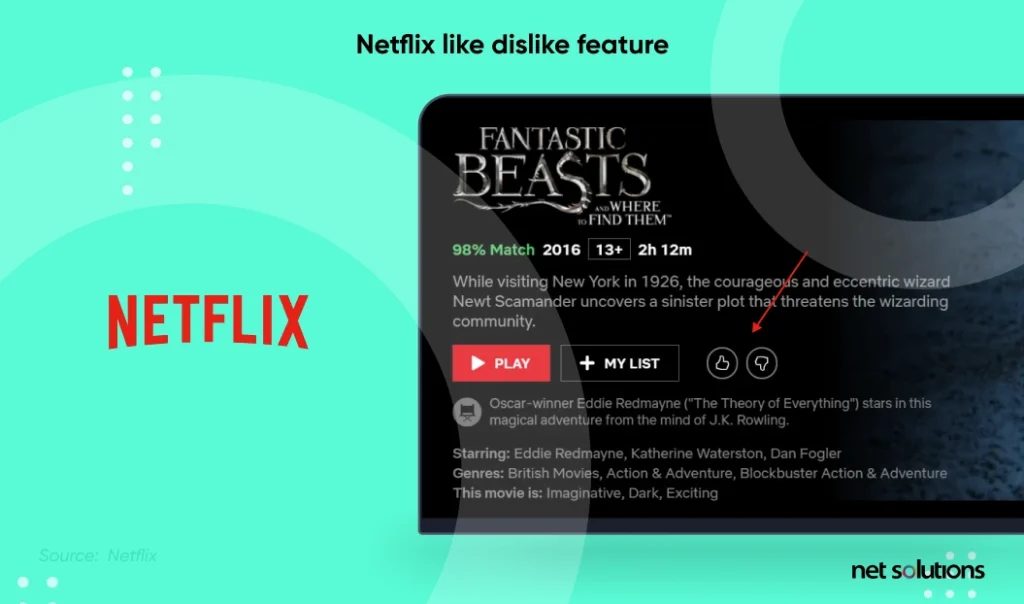
3. John Lewis Enhancing the Online Shopping Experience with AEM
John Lewis, established over 150 years ago, is one of the UK’s flagship retail brands. In recent years, they wanted to enhance the online shopping experience of their customers. Shane Chapman, Digital Asset Manager for John Lewis, noted that customers who shop both in-store and online are more loyal to the brand and accrue higher lifetime value.
Thus, he had the vision to optimize the shopping experience across channels by providing relevant digital content, including appropriate product visualizations, and incorporating immersive media such as video.
John Lewis used AEM Assets to deliver a Personalized User Experience.
John Lewis used Adobe Experience Manager (AEM) assets capability that supports dynamic and personalized media. This enables website visitors to click on any product image and dynamically change colors, upholstery, and other factors to see what suits them.
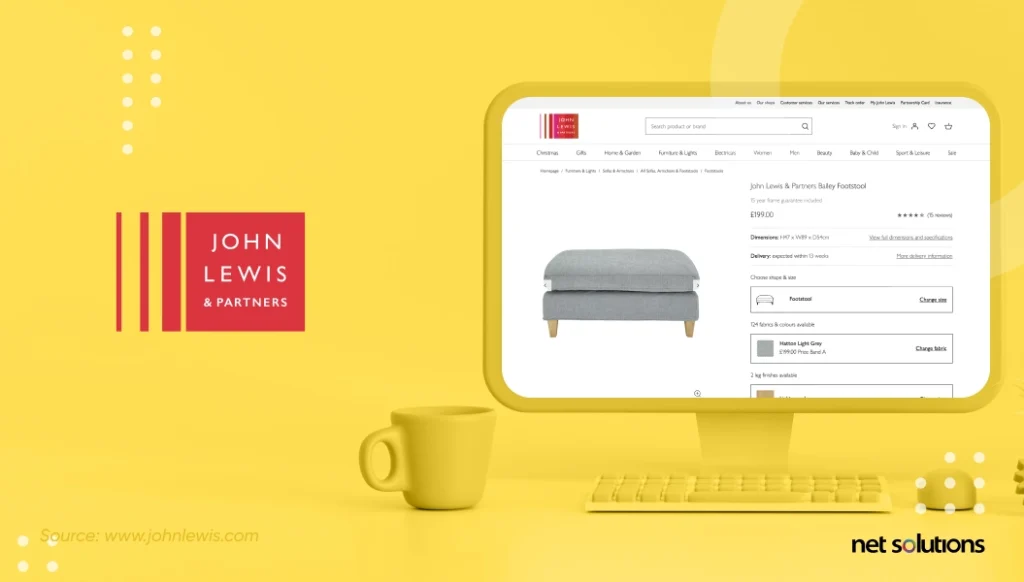
AEM assets’ capability for video also allows site visitors to engage themselves in videos to learn about everything from decorating to beauty advice, thus helping them with their product selections.
With AEM added to its business model, John Lewis could deliver a seamless eCommerce customer experience.
Potential customers were able to view how their purchases would look. This helped John Lewis to create the most powerful brand marketing message: Trust. Trust resulted from delivering a seamless eCommerce customer experience, and this positive experience increased conversion rates.
4. Spotify brings you closer to your favorite creators with Spotify Wrapped
Spotify has carved a unique niche with its personalized music recommendations. However, the music streaming service took personalization up a notch last year by offering Spotify Wrapped.
The Spotify Wrapped feature offered personalized curation of how much time they spent listening to music, what music they listened to, and which singer they spent the most time listening to at the end of 2022. The list was made special by personal messages from over 40,000 music creators like Taylor Swift, Billie Eilish, and Shania Twain. It was as if their favorite creator thanked them personally for listening to their music. The feature was so successful that millions of music creators and listeners around the globe talked about it on social media.
In short, Spotify Wrapped will become one of Spotify’s best strategic moves and a brilliant example of how personalization can make a brand talk of the town.
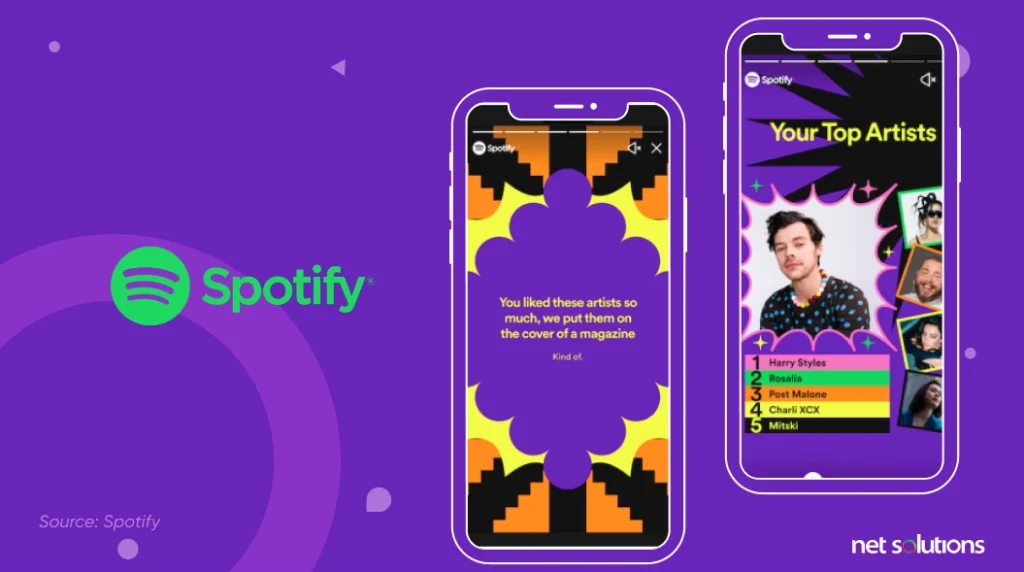
How AI and ML Help Deliver Personalization
There is a need for content to learn and adapt because 74% of online consumers get frustrated with websites when they are shown irrelevant content.
Dynamic Personalization enables content to learn and adapt.
When a brand incorporates data analysis for personalizing the user experience, the offerings are based on the user’s characteristics, behaviors, and attributes. Dynamic personalization uses machine learning (ML) to project potential customers, their needs, and buying habits based on data like demographics, geolocation, behavior, and device.
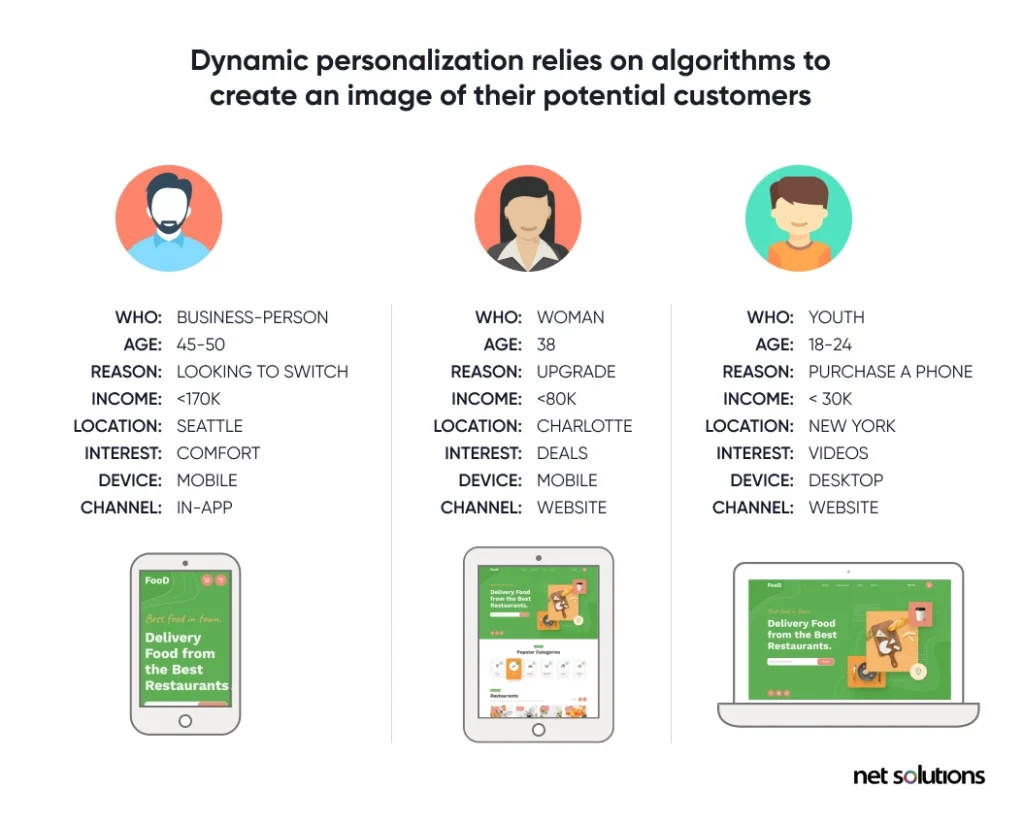
Machine learning is essential to dynamic personalization because it relies on algorithms, filters, and analytics to “predict” a user’s typical behavior with a brand.
The following algorithms are utilized:
- Basic algorithms: Algorithms that do not rely on customer’s data
- Advanced algorithms: Algorithms that rely on customer data
Once the information is received, dynamic personalization can help tailor customer journeys.
For instance, Google keeps track of information regarding a user’s upcoming time commitments (e.g., travel reservations, appointments, interviews, etc.) and notifies them beforehand.
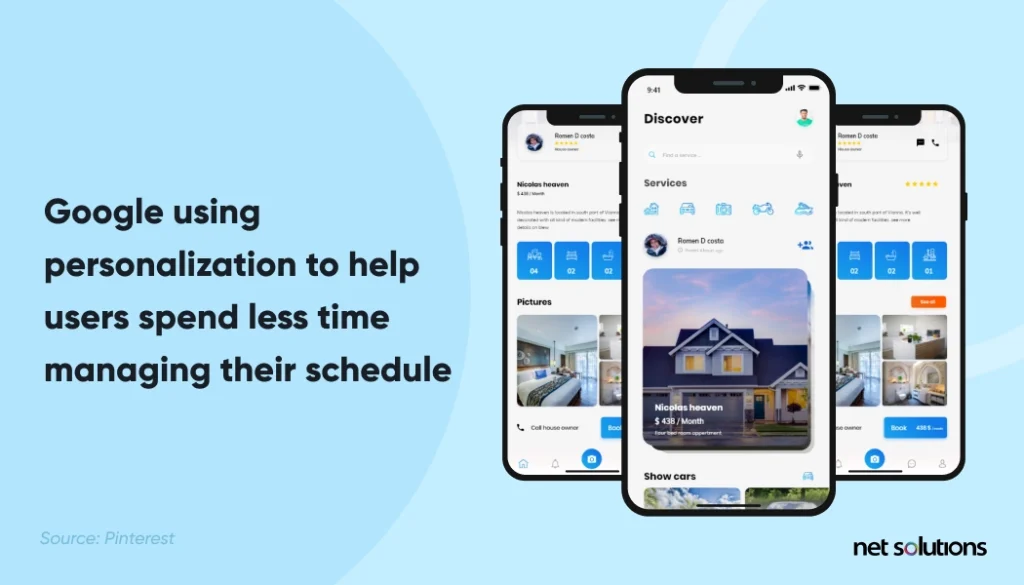
Personalization Best Practices
85% of businesses believe they are offering personalized experiences, but only 60% of consumers seem to think that’s the case.Twillio
Brands are actively investing in personalization, but their efforts need to catch up as they cannot meet customer expectations. This makes it essential to invest in personalization in the right way to make efforts count.
Here are some of the best personalization practices to consider:
1. Gather User Data (The Responsible Way)
The first step towards personalization is focusing on first-party data that comes directly from the users. These are four tactics for collecting this first-party data:
- Collect data at sign-up
- Gather explicit data (i.e., data gathered directly from users) post-sign-up
- Personalize based on implicit data (i.e., user’s behavioral patterns)
- Make use of email to target users through email marketing
The ethical way to collect the first-party data is to ask for the user’s consent before moving forward. According to Twilio’s Segment State of Personalization report:
69% of consumers say they are okay with personalization, so long as it’s data they’ve shared with a business directly.
2. Implement Personalization
Once a user’s information is gathered and analyzed, implement explicit, implicit, and contextual personalization.
For instance, Spotify has a vast collection of music users can choose from and listen to. They use Big Data, AI, and ML in a fantastic way to deliver a Personalized User Experience.
- Spotify is a data-driven organization. It logs over 100 billion data points daily through its platform based on its 365 million active users worldwide.
- Once they acquire the data points, they use that information to train the algorithms and machines to listen to music and extrapolate insights that impact their business and listeners’ experience.
Here’s a living example — Spotify used big data, AI, and ML effectively to provide deeply personalized features like the Discover Weekly playlist that reached 40 million people in its first year.
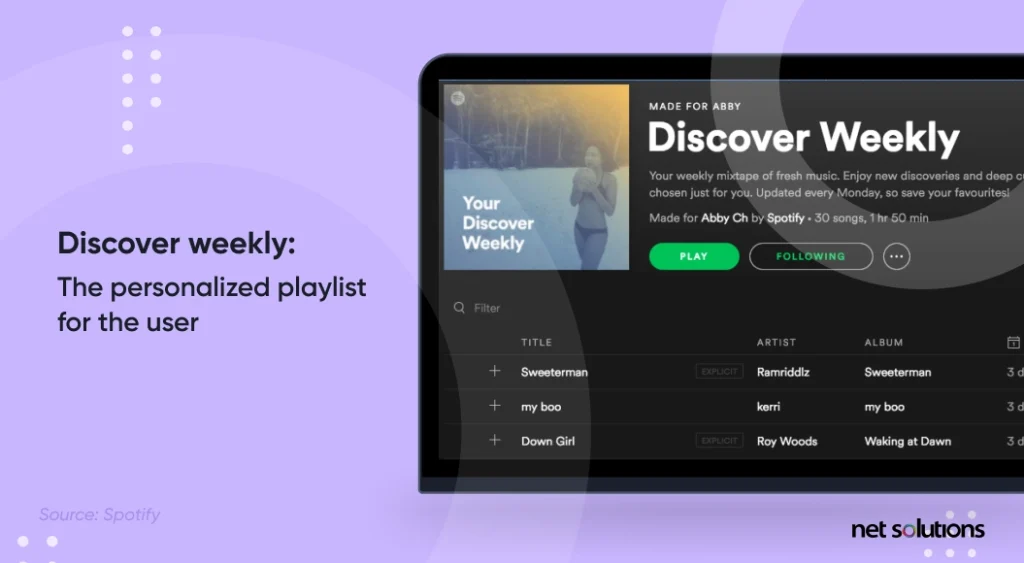
The Discover Weekly playlist from Spotify enabled users to get a personalized playlist every week of music they had not listened to before on the service but were expected to enjoy based on their listening habits.
3. Enable Geolocation
Identifying a user’s location is one of the essential factors in personalization. Geolocation targeting is an excellent approach to offer more targeted personalized content to the channel’s visitors.
Marie Curie, a charitable organization, launched one of its most extensive campaigns, The Great Daffodil Appeal, which aimed to motivate people to collect money for the charity on the high street. The campaign used the geolocation data of each supporter and matched it with the database of collection sites. Using this, they pulled a personalized map detailing each supporter’s nearest collection into the email in real time.
The campaign resulted in an improvement in registrations each year, with a high skew towards online sign-ups.
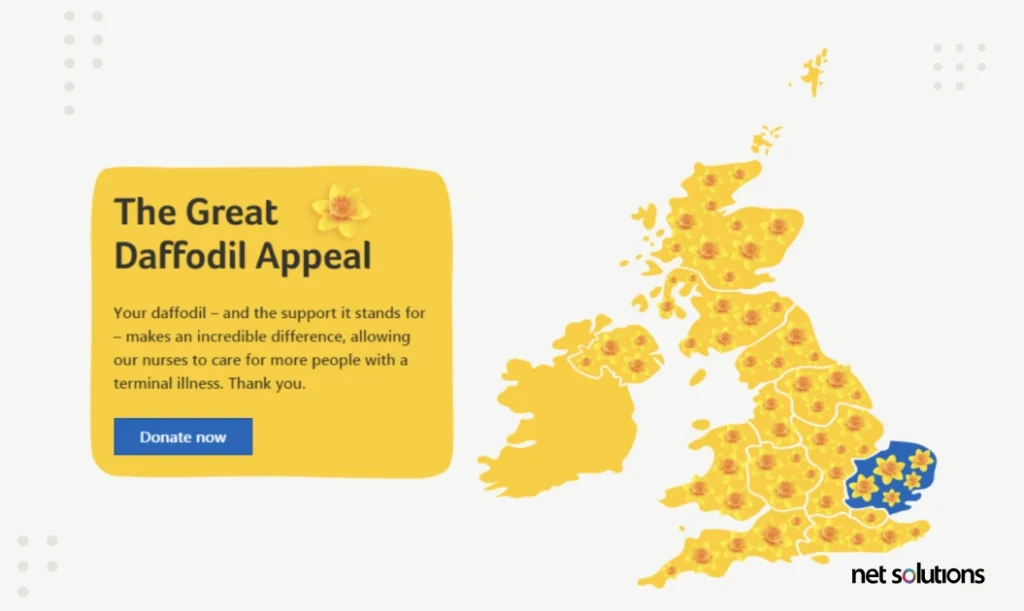
4. Use Push Notifications
Users can consider push notifications annoying, but it is an excellent way to engage with them when they are not actively using the app or website. They can effectively keep the brand’s name fresh in users’ minds and update them about new additions to the website or app.
eXtra, Saudi Arabia’s leading consumer electronics retailer, used retargeting emails in the past to re-engage with mobile users. However, when they switched to a push notification campaign, they witnessed a dramatic improvement in sales, experiencing a 100% year-on-year mobile growth.
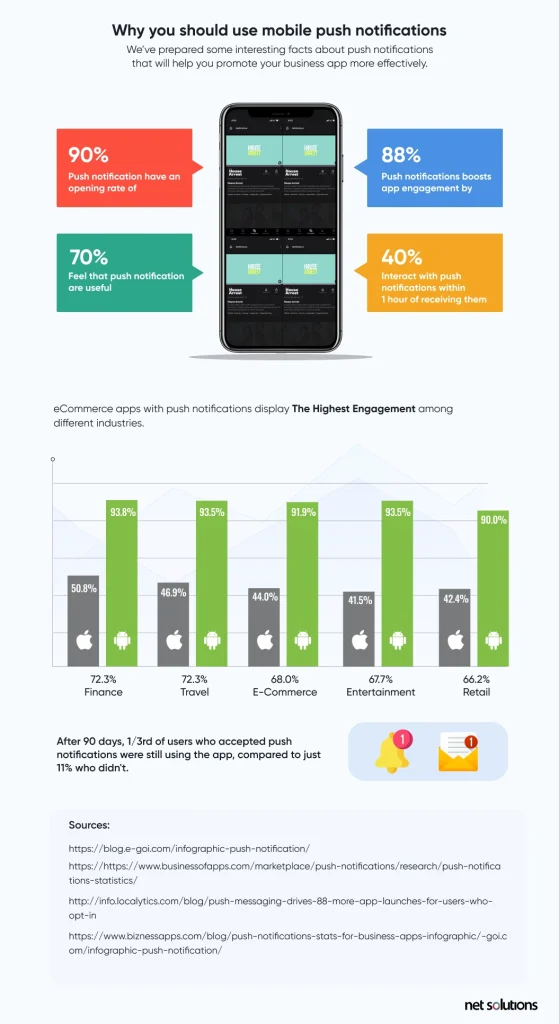
5. Start Where the User Left Off
This is a feature used by Netflix. If a user is unable to watch a program or a movie through to the end, then the app will save the point when the user exits and play the content from the same point when the user logs back in.
Other strategies some eCommerce website apps use are showing the user what they browsed through on a previous visit. Some brands take this strategy even further by sending notifications regarding any added products left in the cart.
This makes things easier for the users because they don’t have to keep track of their journey on every website or app. It’s all being taken care of for them.
How Digital Experience Platforms (DXPs) help to Deliver Personalization
Digital Experience Platforms (DXPs) provide end-to-end touchpoint optimization and a personalized user experience across all customer interactions. A powerful DXP combines customer data, analytics, and marketing automation to nurture potential customers and improve their experience throughout their journey by providing them with real-time, personalized content across all channels.
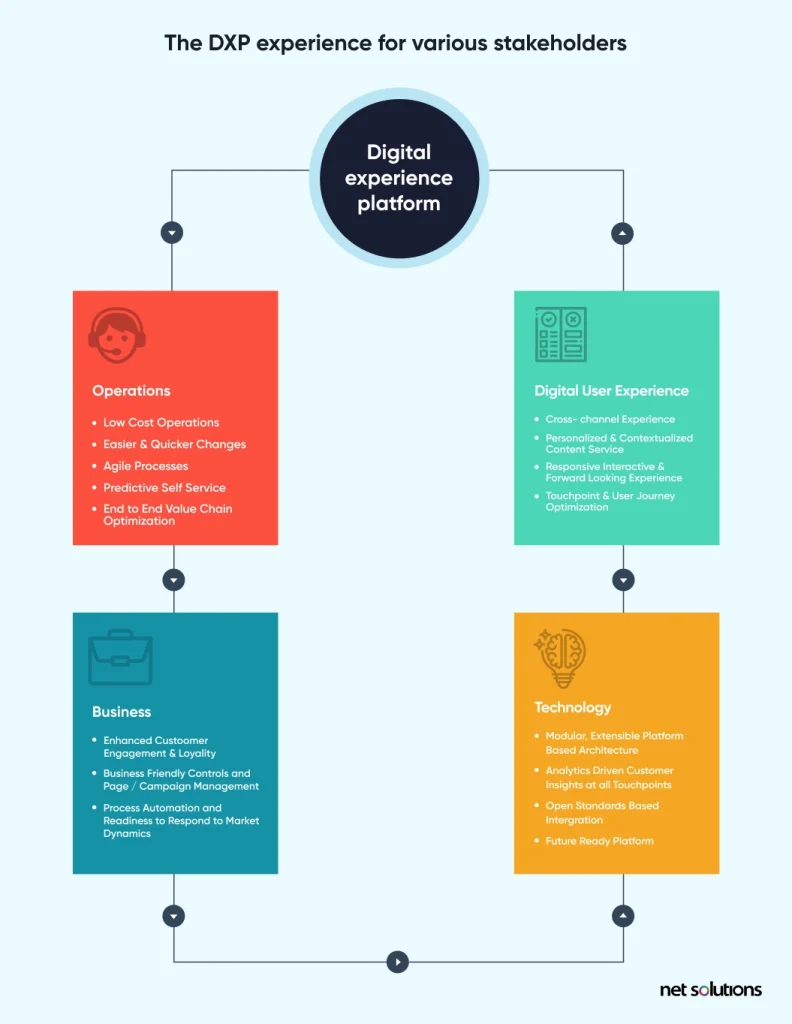
If you’re looking to build a digital experience platform to offer personalized experiences to customers, we can help. Net Solutions is one of the leading user experience design agencies and has helped many brands across the globe with digital experience design and platforms.
Popular among them is Captiv8, an AI-powered brand that helps companies like Honda and Dr. Pepper connect with internet influencers – reaching the millennial demographic. Net Solutions helped them build a unique brand, from the logo to the marketing website that launched their efforts.
Frequently Asked Questions
Apps that highly focus on UX personalization include:
- Social media apps
- E-commerce apps
- News and content-based apps
- Personal productivity and organization apps
- Fitness and wellness apps
- Travel and booking apps
- Music and entertainment apps
- Banking and financial apps
- Educational and learning apps
These apps typically have a lot of user-generated content and/or user-specific data, and they often have many customization options to allow users to tailor the app to their preferences and needs. They also use data and analytics to personalize the experience for each user.
Customization allows users to adjust settings or options in an app or product to suit their preferences.
On the other hand, personalization is the ability of an app or system to automatically adjust or tailor its content or features based on a user’s behavior or preferences.
In short, customization and personalization aim to provide a more personalized experience for users. However, customization is more about giving control to the user to adjust settings, while personalization is more about using data and analytics to tailor the experience to the user automatically.
User profiling, behavior tracking, recommendation algorithms, personalized messaging, and push notifications are some ways to implement personalization.
Here are a few examples of personalization:
- Social media apps like Instagram show posts in your feed based on your preferences.
- Spotify offers personalized music streaming based on your listening preferences.
- Netflix recommends your movies and TV shows based on your watch history.
- Udemy offers a personalized learning path based on your learning style and preferences.

